The musculoskeletal system is the most important part of our body. Back pain often causes the need to see a doctor.
The cause of regular back pain, stiff movement and muscle spasms is osteochondrosis of the back - a disease of the bony and cartilaginous tissues, as well as the musculoskeletal system, caused by various factors that affect the body.
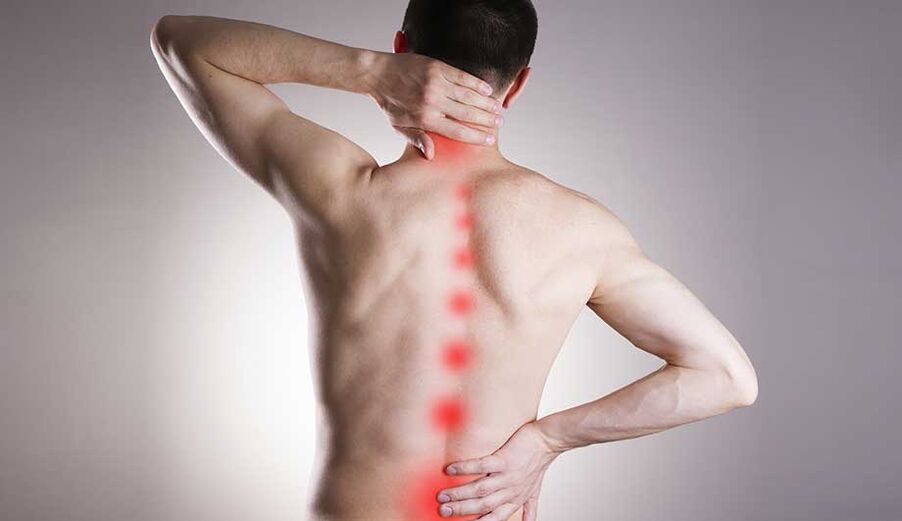
Dorsal osteochondrosis is a problem faced by many.
Etiology and pathogenesis of osteochondrosis
Osteochondrosis of the back manifests itself gradually, latently affecting all new areas of the spine. Initially, changes occur in the structure of the cartilaginous discs of the vertebrae: they lose elasticity, the space between the vertebrae shrinks, and the nerve endings in the spinal cord are violated.
The patient begins to experience back pain. Subsequently, the alterations affect smaller elements of the vertebral structure, growths of bone tissue of a degenerative nature develop, which impede the mobility of the vertebral column, healthy cartilage cells are destroyed, the disease affects bones and ligaments. As a side effect, the deformation of the vertebrae causes an increase in the load on the organs and arteries. This is due to the specificity of the blood supply - the displacement of spinal segments causes compression of the vertebral artery and is ultimately the cause of a serious disturbance of blood flow in the central nervous system.

The main problem that causes the violation of the formation of the spine and the osteochondrosis process is nutritional deficiency and reduced blood supply to the tissues of the bone structure. The reasons for development are many external factors, internal influences and a person's behavioral processes.
Endogenous (internal) causes include:
- genetic factors of heredity;
- disturbance of the metabolism of trace elements (phosphorus and calcium);
- characteristics of the cartilaginous tissue;
- age-related changes in the body;
- overweight;
- orthopedic diseases.
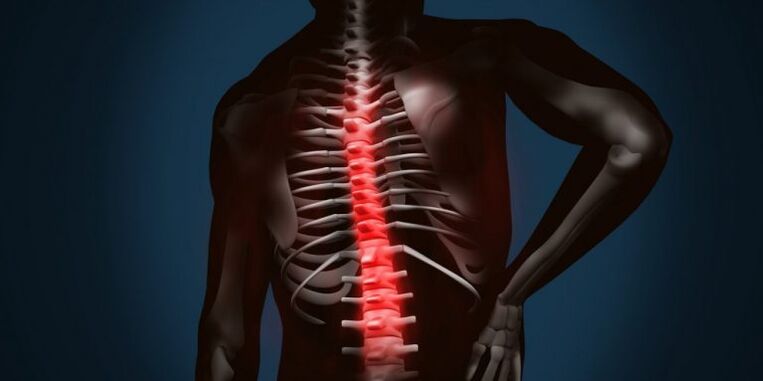
As a result of exogenous (external) and lifestyle causes, osteochondrosis develops as a result of:
- low level of physical development of the back muscles;
- Spinal injuries;
- poor posture, scoliosis;
- incorrect or uncomfortable systematic posture;
- unbalanced diet, eating greasy junk food;
- irregular physical exertion, back strain;
- bad habits;
- constant stress.
The latent form of osteochondrosis can be manifested by sudden lifting of weights, jumping, falling, which will lead to spinal disc microtrauma and nerve root violation.
It is then that the patient may experience a sharp, sharp pain for the first time. In the future, the pain syndrome comes back repeatedly with varying intensity. Affected nerve stem cells signal the need for urgent medical intervention.
Disease classification, main stages
In medicine, osteochondrosis is classified according to the affected area of the spine:
- cervical;
- chest;
- lumbar and sacral region.
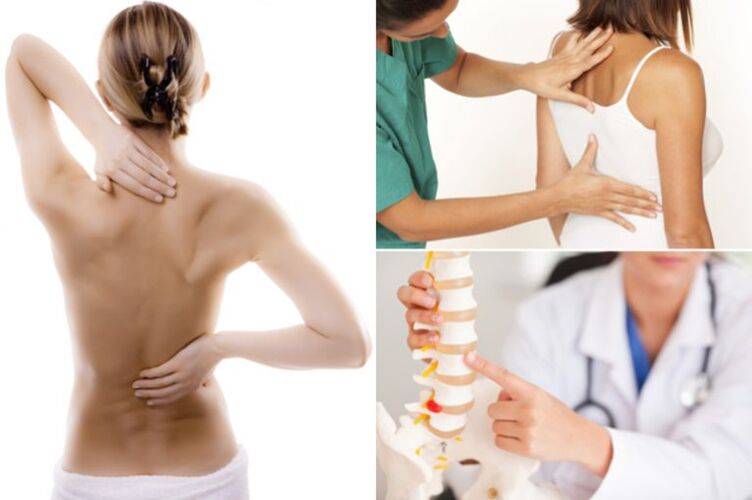
Osteochondrosis of the back is classified according to the affected area.
The main stages of disease development:
- The beginning of the development of osteochondrosis - formation of micro-cracks in the fibrous ring, loss of moisture in the bone and cartilage tissue. The stage manifests itself as a subtle discomfort in one of the spinal areas after physical exertion or an uncomfortable body position.
- The first painful attacks are felt. In the second stage, the discs protrude, the intervertebral space of the discs shrinks and the fibrous capsule collapses, the nerve roots are pinched. Pain signals the process of metabolic disturbances in the cartilage tissue and its destruction. Ignoring the second stage of osteochondrosis becomes an impetus for cartilage inflammation and, as a result, the infringement of nerve fibers, blood and lymph vessels.
- In the third stage of the disease, the affected vertebrae are deformed, the cartilage tissue is effaced. With the proper active treatment, it is possible to prevent the destruction of cartilage cells and spinal curvature. However, in the future, therapy and supportive care will become the patient's constant companions for normal physical activity.
- Initiated osteochondrosis, which has progressed to the last fourth stage of development, often becomes the cause of the deficiency. All destructive processes are irreversible: significant displacement of the vertebral structure, compaction of cartilage tissues, pathological growth of bone tissue. The patient feels a sharp pain, sometimes unbearable, with each movement.
Symptoms
The signs of development of joint osteochondrosis are easy to confuse with other diseases similar in symptomatology. In addition, the symptoms of manifestation from a separate sector of the vertebral structure have characteristic features.
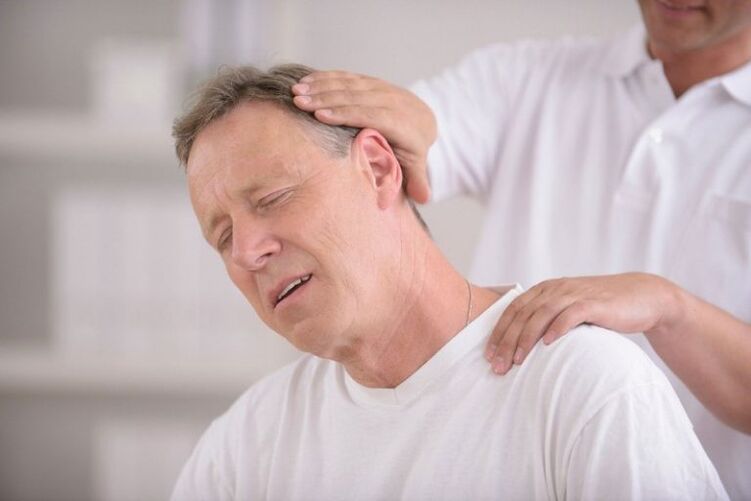
The main symptoms of osteochondrosis include:
- stiffness when moving, grinding, crushing, or weight;
- pain in the area where the inflammation is located (cervical, thoracic or lumbar) of variable intensity and character;
- numbness of limbs;
- muscle weakness, impaired performance;
- pain attacks, radiating along nerve channels to associated parts of the body (shoulder, shoulder blade, leg).
Cervical osteochondrosis
Osteochondrosis of the cervical sector is expressed in the following diseases:
- neck or neck pain;
- dizziness;
- tinnitus, hearing and visual impairment;
- sluggishness of the neck after sleeping or holding the same posture for a long time;
- painful sensations when turning the head.

In cervical osteochondrosis, dizziness and painful sensations may occur when turning the head. The appearance of the first painful sensations is seen in the back of the head and is similar to the head. Inflamed cartilage pressures on nerve fibers, causing vasospasm.
Thoracic osteochondrosis
The development of thoracic osteochondrosis can be masked for a long time as cardiovascular disease. Its characteristic symptoms:
- violation of tactile sensations and numbness of limbs;
- tingling in the intercostal space;
- pain in the heart region, heart rhythm disturbances;
- restriction of respiratory functions, weight on the sternum;
- disturbance of the gastrointestinal tract (pancreatitis, bloating);
- radiating pain to the scapular region.
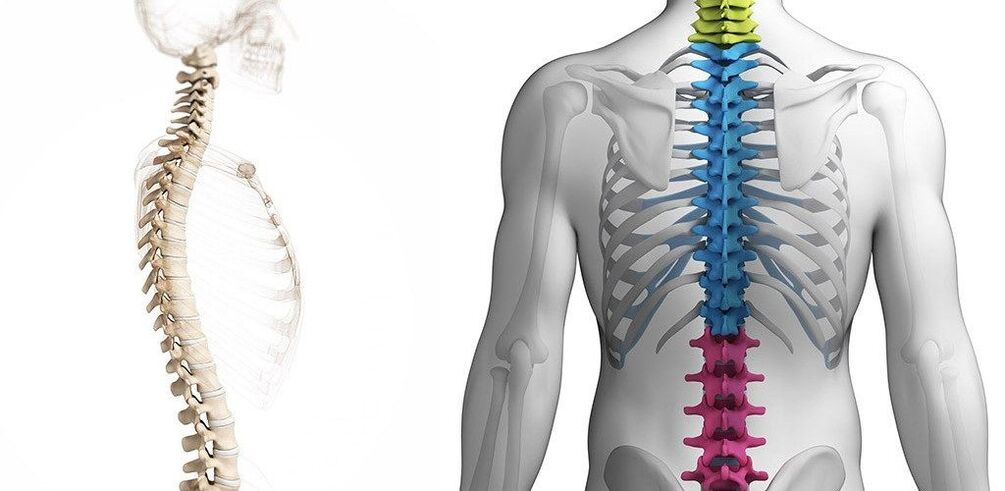
lumbar osteochondrosis
Progressive lumbar osteochondrosis in an advanced form can lead to disability. The inflamed area of the spine interrupts the supply of trace elements needed by the lower extremities for the full functioning of joints and muscles. Compressed nerve trunk cells cause unbearable back pain and the use of drug therapy.
The main symptoms of lumbar osteochondrosis include:
- numbness of the lower extremities;
- sore muscles, weakness;
- goosebumps;
- muscle spasms;
- reproductive system dysfunction;
- pain may be acute or in the lower back, radiating to the leg.

Diagnosis
On average, there are 20 people diagnosed with osteochondrosis per 1000 inhabitants. A disease like osteochondrosis is difficult to diagnose in the early stages. Its symptoms are quite hidden and clearly manifest in 2 or 3 stages, when the time comes for a serious drug treatment.
If the development of osteochondrosis is suspected, first of all, it is necessary to consult a specialist and carry out a comprehensive examination for differential diagnosis and clarification of the diagnosis.
Doctors use three standard types of diagnoses:
- Neurological.
- Instrumental.
- Laboratory.
The primary neurological examination of the patient is performed by a neurologist, determining the category of nervous structures affected by the disease. In addition, to exclude diseases of another nature with similar symptoms, the patient can be referred for radiography, ultrasound, MRI and ECG.
Laboratory (analysis)
Laboratory diagnostics are consultative - auxiliary value. Blood tests show an increase in erythrocyte sedimentation rate and a decrease in calcium levels. This means the course of pathological processes in the body, but it does not indicate the specifics of their development. Therefore, this method is included in the comprehensive patient examination and its results are deciphered based on other medical data.
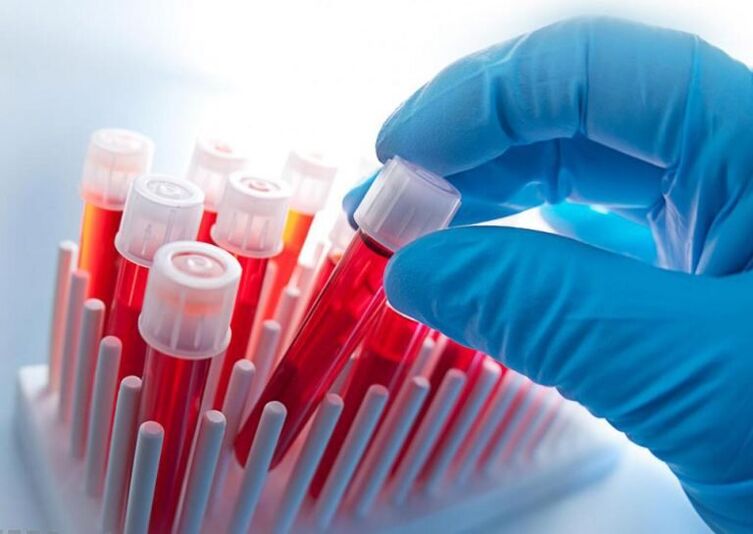
Instrumental
Diagnoses with professional equipment provide the most accurate results for diseases of different natures. The main search tools are:
- X-ray - reveals anatomical changes in bone, cartilaginous and nervous tissues.
- MRI - Magnetic Resonance Imaging. Allows you to visualize the processes taking place in bones and soft tissue, blood vessels and nerve fibers.
- CT (computed tomography) - similar to MRI, but produces radiation.
- Electromyography - is able to decipher neurological symptoms.
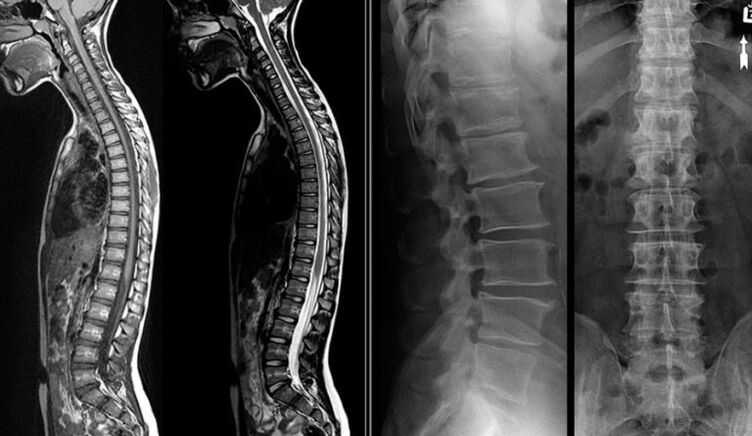
traditional treatment
The treatment regimen for osteochondrosis is traditional. Its components are drug therapy through several directions: NSAIDs, chondroprotectors, analgesics, hormones and adjuvant vitamin complexes. In addition to the load on the body with medicines to combat osteochondrosis, physiotherapy, manual therapy, reflexology, surgery, massage and preventive measures are used.
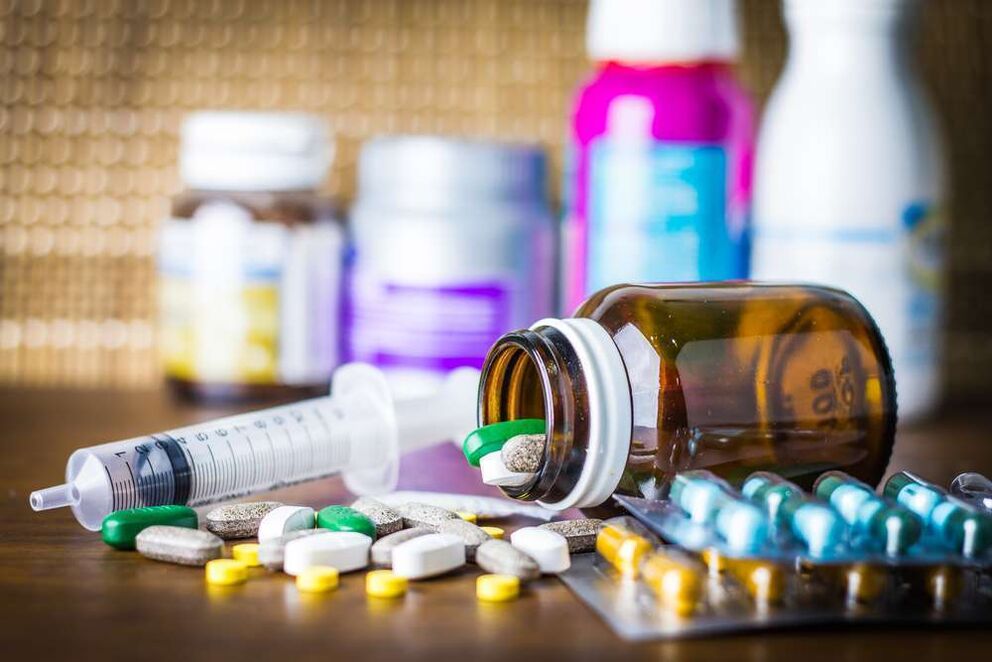
drug therapy
It is instantly impossible to permanently stop back pain due to osteochondrosis, but medical drug therapy will give the lower back a respite. Powerful anesthetics and anti-inflammatory drugs (NSAIDs) will provide an analgesic effect and initiate the process of fighting inflammation in the spinal regions. Essential drugs for the treatment of dorsal osteochondrosis:
- Chondroprotectives are active substances that restore the elasticity of the cartilage tissue and the mobility of the vertebrae.
- Muscle relaxants - soothing spasms of the muscle structure.
- Vascular - improving blood circulation and metabolic processes.
- Vitamin and antioxidant complexes.
Only with the use of a properly selected therapeutic complex can positive dynamics be achieved and the result maintained for a long time.
In the treatment of dorsal osteochondrosis, different forms of medication are used:
- External remedies: ointments, creams, gels.
- Preparations for internal consumption: capsules, pills.
- Medication Injections.
Surgical intervention
Unfortunately, there are cases of osteochondrosis, in which treatment time is lost and medications do not give the expected result, and the disease progresses. So the only solution is surgery. The main reasons for the operation are:
- Removal of an intervertebral hernia that compresses the spinal cord.
- Reduction of the intervertebral fissure to 1/3 of its original size.
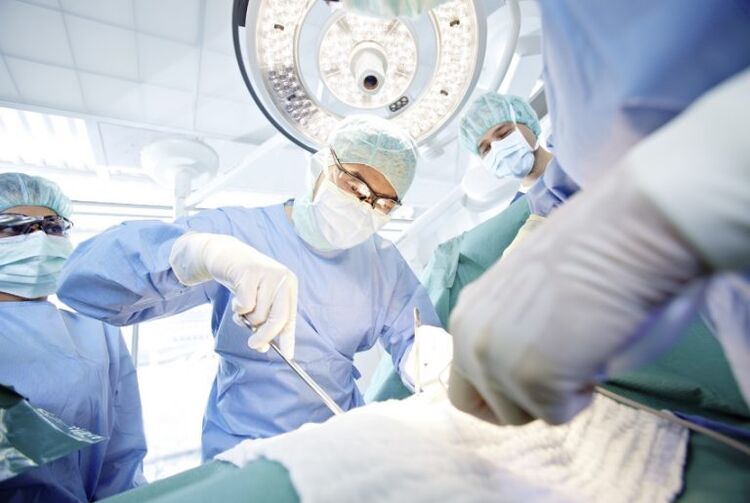
Referral for surgical intervention may be prescribed by a physician based on a complete diagnostic picture of the patient and the presence of direct indications for removal of a pathological defect. In spine surgery, the primary place is the method of discectomy—the surgical removal of a deformed disc. Instruments can be microdiscectomy, B-Twin system or core laser vaporization. Rehabilitation after spinal surgery takes six months.
Fitness
An excellent supportive therapy for the treatment of osteochondrosis is gymnastics or exercise therapy. Regular exercise will help:
- Strengthen the muscular corset - this is necessary for an even load on the spine.
- Provides blood circulation stimulation to saturate bone and muscle tissue.
- Develop correct posture.
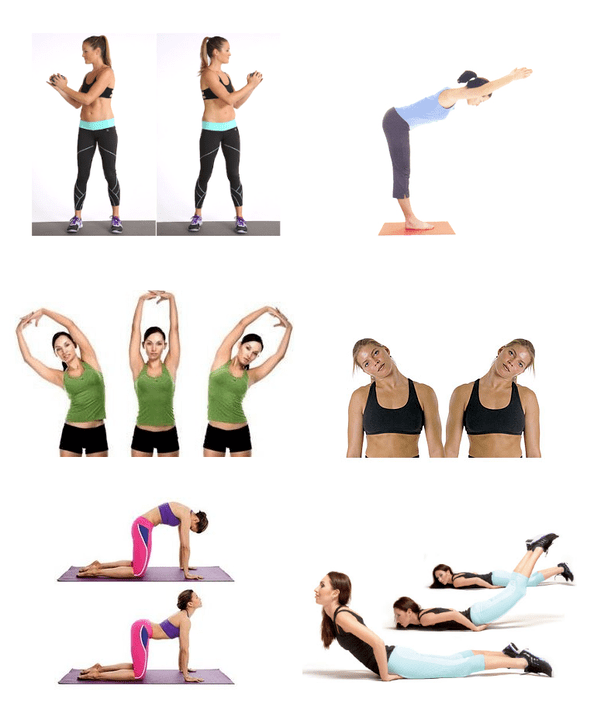
It is important to remember that the exercises must be adapted to the diagnosis and comply with the following principles:
- Regularity of execution.
- Smoothness of movement, no bumps.
- If painful sensations arise, you may need to reduce the load or stop exercising.
- Monitor your well-being.
Physiotherapy
Physical therapy is indicated for patients with osteochondrosis of the back to relieve inflammation and is performed in places where the disease is concentrated. Treatment courses contribute to:
- Increasing body strength.
- Restoration of metabolism in the affected sector.
- Relief from pain and swelling.
- Improve blood vessel circulation.
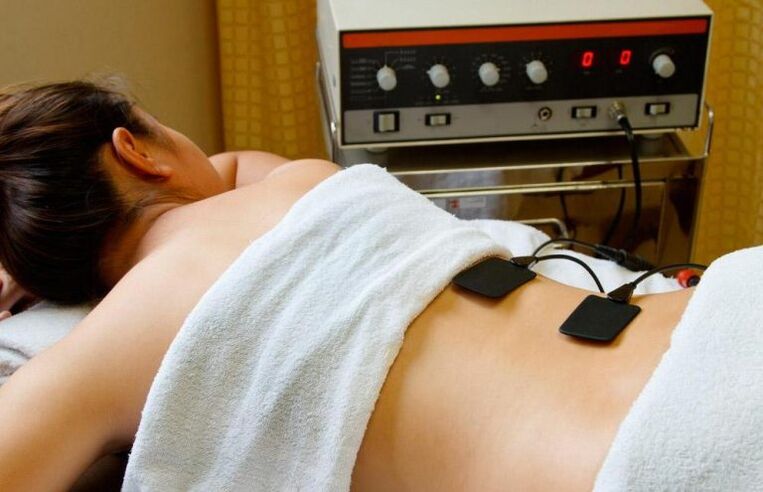
To choose a physical therapy method for the treatment of osteochondrosis, it is necessary to clearly define the desired result. Mainly used:
- Laser therapy.
- Ultrasonic exposure.
- Electrical stimulation.
- Magnetotherapy.
Diet
There is no single diet option for patients with osteochondrosis. However, physicians have reached unanimous agreement that it is categorically not recommended to use products from the following categories with this diagnosis:
- Greasy soup broth.
- Pork and other fatty meats.
- Animal fats from birds (goose, duck).
- Coffee, alcoholic beverages with caffeine.

Also, alcohol and sweets are limited on the menu.
As an example of diet, you can use diet number 15. It includes all vital macronutrients, minerals, vitamins and carbohydrates. The energy value of the correct menu must be at the level of 2600-2700 kcal, which is equivalent to 85-90g of protein, 350-400g of carbohydrates and 90-95g of fat.
Thus, the ideal menu for a patient with osteochondrosis is a combination of non-nutritive balanced foods, rich in vitamins and minerals. Meals are divided into small portions 6 times.
traditional treatment
Folk remedies are often used at home to relieve inflammation, eliminate pain and muscle spasms, and generally strengthen the body. There are many recipes for traditional medicine decoctions and infusions, which are used in three main ways:
- friction;
- compresses;
- herbal baths.
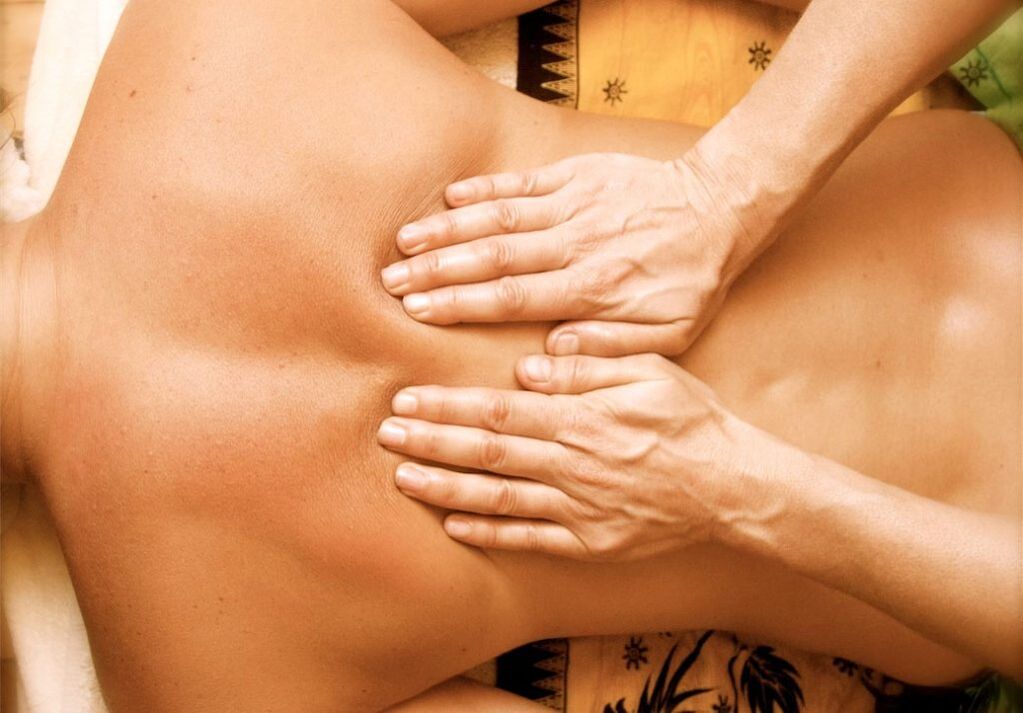
Daily use allows you to get rid of discomfort in 10-14 days. Conventionally, folk remedies can be divided into systemic and local effects on the body.
System Tools
To affect the entire body and spine, you can use natural systemic preparations in the form of decoctions.
An example of a positive effect is the action of a decoction of yarrow, which relieves pain, combats inflammation and soothes.
local funds
Local remedies for popular formulations include ointments, infusions for compresses and rubbing. These funds should be mixed according to the recipe and applied to the inflamed area, but only if there is no allergy to the components and damage to the skin. Among the popular compositions, special attention is given to honey compresses, ginger ointment in the drugstore calendula tincture, a mixture of plantain and sage herbs, rubbing horseradish with vodka.
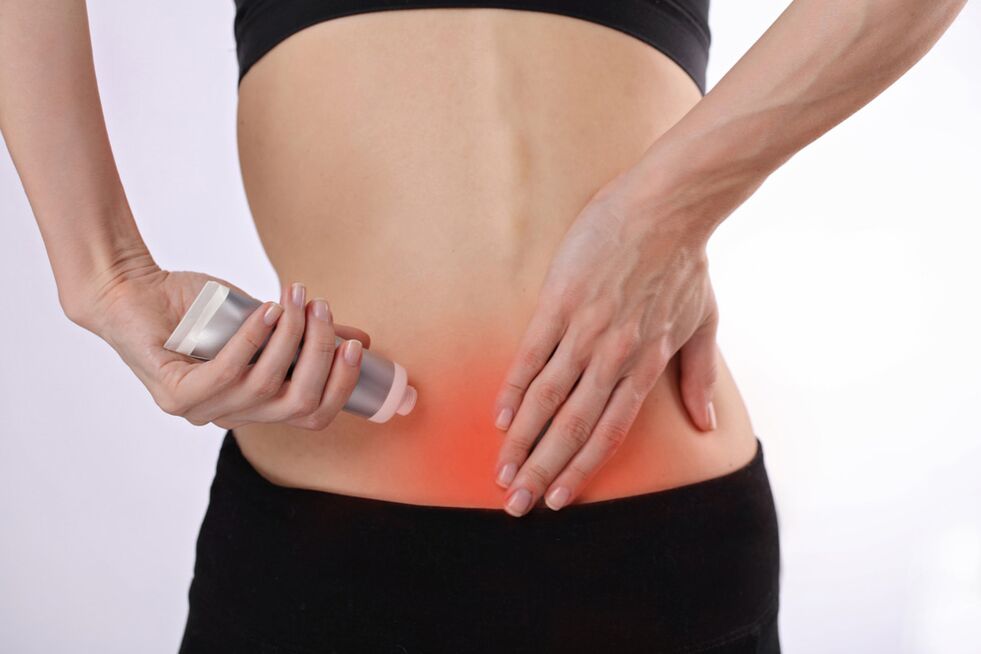
To choose an effective method and prescription, it is necessary to consult your doctor, as home treatment methods are only an integral part of general therapy and have only an auxiliary effect.
Prophylaxis
Therapeutic therapy for back disease cannot be successful in the long term without preventive measures. Even the most effective and expensive medication does not guarantee a return of symptoms as a result of a return to the body's daily stress. Therefore, the positive effect must be consolidated and maintained using a few simple rules:
- Do not lift weights above 10 kg.
- Monitor the even distribution of load in the back muscles.
- Observe rationality and balance in nutrition.
- Take restorative vitamins and active supplements (mucopolysaccharides).
- Develop a regimen to change rest and work.
- Keep up physical activity.
Remember that this category of disease is latent in nature. Therefore, when a diagnosis is made, osteochondrosis of the back should not run its course, even in the absence of obvious symptoms. Following all your doctor's recommendations and home care will allow you to return to normal functioning after treatment more quickly, but constant monitoring is needed to avoid an exacerbation.


























